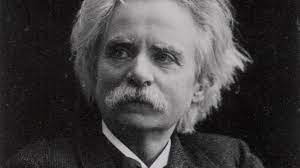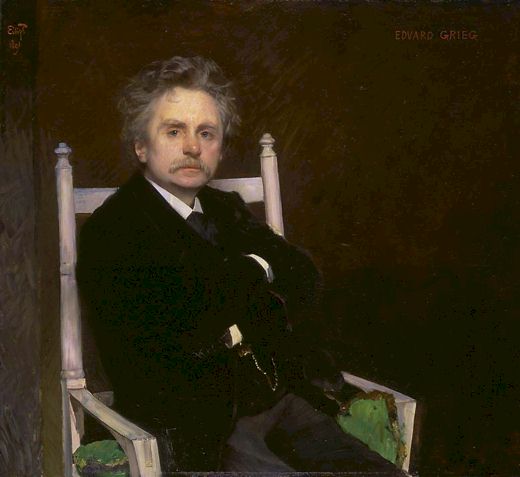Edvard Grieg (1843–1907) was a Norwegian composer and pianist, widely regarded as one of the leading figures in the Romantic period. His music is deeply rooted in the folk traditions of his homeland, bringing a unique blend of lyricism, vibrant rhythms, and rich harmonies. Grieg’s compositions often evoke the beauty of Norway’s landscapes, and his works remain beloved around the world. Here, we explore five of his most iconic and enduring compositions.
1. Piano Concerto in A Minor, Op. 16 (1868)
Grieg’s Piano Concerto in A Minor is perhaps his most celebrated work. Composed when he was just 25 years old, this concerto is a masterpiece of the Romantic era. The work opens with a dramatic flourish of chords from the piano, followed by a sweeping orchestral melody. It is known for its lyrical second movement, a dreamy adagio, and its lively final movement, which showcases Norwegian folk rhythms. This concerto has become a staple of the piano repertoire and continues to be performed by orchestras and soloists worldwide.
2. Peer Gynt Suites, Op. 23 (1875)
Originally composed as incidental music for Henrik Ibsen’s play Peer Gynt, Grieg’s Peer Gynt Suites have taken on a life of their own as concert pieces. There are two suites, each consisting of four movements. The most famous movements include Morning Mood, which evokes the serene beauty of a sunrise, and In the Hall of the Mountain King, a thrilling and progressively intense piece. Grieg’s music for Peer Gynt brilliantly captures the drama and atmosphere of Ibsen’s tale and remains some of his most popular work.
3. Lyric Pieces (1867–1901)
Grieg composed a series of 66 short piano pieces under the title Lyric Pieces across ten volumes, each filled with charm and expressiveness. These pieces are miniatures, often inspired by nature, folk music, and the everyday life of Norway. Among the most beloved of these works is Wedding Day at Troldhaugen, a joyous and celebratory piece originally written to mark Grieg’s own wedding anniversary. Other highlights include the peaceful Notturno and the folk-like Norwegian March. The Lyric Pieces showcase Grieg’s gift for melody and his ability to evoke emotions in short, intimate forms.
4. Holberg Suite, Op. 40 (1884)
Composed in honor of the 200th birthday of Norwegian-Danish playwright Ludvig Holberg, Grieg’s Holberg Suite is a neo-Baroque composition for string orchestra. The suite consists of five movements, each inspired by the dance forms of the Baroque period, yet imbued with Grieg’s distinctive Romantic flair. The opening Praeludium is bright and energetic, while the subsequent movements, including the graceful Sarabande and lively Rigaudon, offer a variety of moods. The Holberg Suite is a beautiful blend of past and present, demonstrating Grieg’s versatility as a composer.
5. String Quartet No. 1 in G Minor, Op. 27 (1878)
Although Grieg primarily composed for piano and orchestra, his String Quartet No. 1 in G Minor is one of the most powerful and intense works in the chamber music repertoire. The quartet features bold, passionate themes, intricate counterpoint, and dramatic contrasts of dynamics and texture. The piece’s first movement introduces a distinctive theme that recurs throughout the quartet, creating a cohesive and unified work. Grieg’s use of Norwegian folk elements and his masterful command of form make this quartet a standout among his compositions.
Conclusion
Edvard Grieg’s music is a reflection of his deep connection to Norwegian culture and nature, as well as his gift for melody and emotion. From his stunning Piano Concerto in A Minor to the charming Lyric Pieces, his compositions continue to resonate with audiences around the world. These five works showcase the breadth of Grieg’s talent, offering a glimpse into the heart and soul of one of Norway’s greatest composers. Whether you’re a newcomer to classical music or a seasoned listener, Grieg’s music has the power to captivate and inspire.


Comments are closed